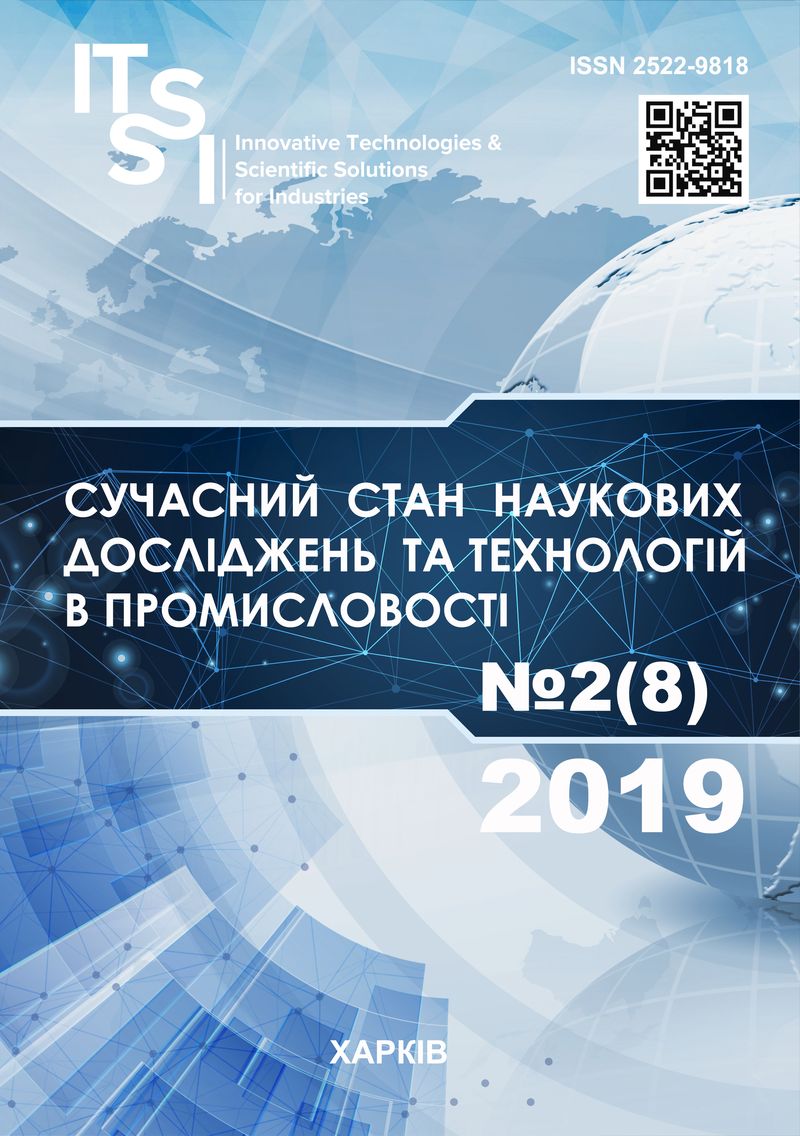ARCHITECTURE DEVELOPMENT OF SOFTWARE FOR MANAGING NETWORK PLANNING OF SOFTWARE PROJECT REENGINEERING
DOI:
https://doi.org/10.30837/2522-9818.2019.8.025Keywords:
project management, graph, network schedule, software, reengineering, CASE-tool, UML-diagramAbstract
Subject of the research is a software tool for construction of graphic network model of reengineering the software project. Purpose of the research is the development of technical architecture of software tool for automated design of network schedules for organization of production the software systems reengineering within the framework of project management. Along with the linear charts and table calculations, network planning methods are extensively used in the development of long-term plans and models for the creation of complex production systems and other objects of the long-term use. The task before creating a software tool is the ability to work with all types of network charts with the possibilities of their comprehensive transformation. Methods. The article is based on the methods of network planning for the PERT (Program Evaluation and Review Technique) methodology, the use of elements of graph theory and the Gantt chart method as an accounting method for project management. Simulation of the system software architecture is carried out within the UML (Unified Modeling Language) 2.5 methodology using the CASE toolkit Enterprise Architect 14. Results. The software architecture for managing network planning of software project reengineering is designed in the article. Conclusions. The architecture is developed in the form of several structural and behavioral diagrams, namely: use case diagram, which provides an analyst with a detailed idea of the software field of application; sequence diagram that is designed to create a programmer's imagination on how to perform actions when working with a future program tool; state chart diagram that is required for a visual representation of those states in which the software can be at different times; class diagrams that are used to design the main form filling of the future software; component diagram that is designed to examine the composition of the components of the future software and indicate the sequence of compilation and assembly of individual modules. The numerical and temporal estimation of the planning parameters is based on the data obtained from the Gantt design charts.
References
"Program Evaluation and Review Technique (PERT)", available at : https://www.inc.com/encyclopedia/program-evaluation-and-review-technique-pert.html (last accessed 01.05.2019).
Bondy, J. A., Murty, U. S. R. (2008), Graph Theory. Springer, San Francisco, 655 p. DOI: https://doi.org/10.1007/978-1-84628-970-5.
Emelichev, V. A., Mel'nikov, O. I., Sarvanov, V. I. (2009), Lectures on graph theory. 2nd ed. [Lektsii po teorii grafov. Izd. 2], Moscow, 392 p.
Jungnickel, D. (2013), Graphs, Networks and Algorithms. 4th ed., Springer, Berlin, 677 p. DOI: https://doi.org/10.1007/978-3-642-32278-5.
Sedgewick, R. (2003), Algorithms in Java, 3rd ed., Part 5: Graph Algorithms, Addison Wesley, Boston, 528 p.
"Commercial specialized programs for graph construction" ["Kommercheskie spetsializirovannye programmy dlya postroeniya grafov"], available at : http://www.boost.org/ (last accessed 02.04.2019).
"LION Graph Visualizer", available at :http://lion.disi.unitn.it/intelligent-optimization/visualizer.html (last accessed 03.04.2019).
"Graph analyzer – graph visualization environment" ["Grafoanalizator – sreda vizualizatsii grafov"], available at :http://grafoanalizator.unick-soft.ru/ (last accessed 03.04.2019).
Jalote, P. (2005), Software project management in practice, Addison-Wisley, Indianapolis, 242 p.
Velykodniy, S. (2019), "Method of presenting the assessment for reengineering of software systems with the project coefficients help" ["Metod predstavlennia otsinky reinzhynirynhu prohramnykh system za dopomohoiu proektnykh koefitsiientiv"], Innovative Technologies And Scientific Solutions For Industries, No. 1 (7), P. 34–42. DOI: https://doi.org/10.30837/2522-9818.2019.7.034
Punmia, B. C., Khandelwal, K. K. (2016), Project Planning and Control with PERT and CPM. Laxmi Publications, New Delhi, 258 p.
Kerzner, H. (2003), Project Management: A Systems Approach to Planning, Scheduling, and Controlling, 8ht ed., John Wiley & Sons New Jersey, 914 p.
Velykodniy, S. S., Tymofieieva, O. S., Zaitseva-Velykodna, S. S. (2018), "The calculation method for indicators project estimation in the implementation of software systems re-engineering" ["Metod rozrakhunku pokaznykiv otsinky proektu pry vykonanni reinzhynirynhu prohramnykh system"], Radio Electronics, Computer Science, Control, No. 4, P. 135–142. DOI: https://doi.org/10.15588/1607-3274-2018-4-13.
Velykodniy, S. (2015), "Reengineering of SCADA-systems by shipping energy plants ["Reinzhiniring sistem monitoringu ta distantsiynogo upravlinnya sudnovimi energetichnimi ustanovkami"], 22th International Conference "Automatic 2015", 10–11 sep. : proceedings, Odessa, P. 133–134.
Nevlyudov, I. Sh., Velykodniy, S. S., Omarov, M. A. (2010), "Using CAD / CAM / CAE / CAPP when forming control programs for CNC machines" ["Ispol'zovanie CAD/CAM/CAE/CAPP pri formirovanii upravlyayushchikh programm dlya stankov s ChPU"], Eastern-European Journal of Enterprise Technologies, Vol. 2, Issue 2 (44), P. 37–44.
Downloads
Published
How to Cite
Issue
Section
License
Copyright (c) 2019 Stanislav Velykodniy, Zhanna Burlachenko, Svitlana Zaitseva-Velykodna

This work is licensed under a Creative Commons Attribution-NonCommercial-ShareAlike 4.0 International License.
Our journal abides by the Creative Commons copyright rights and permissions for open access journals.
Authors who publish with this journal agree to the following terms:
Authors hold the copyright without restrictions and grant the journal right of first publication with the work simultaneously licensed under a Creative Commons Attribution-NonCommercial-ShareAlike 4.0 International License (CC BY-NC-SA 4.0) that allows others to share the work with an acknowledgment of the work's authorship and initial publication in this journal.
Authors are able to enter into separate, additional contractual arrangements for the non-commercial and non-exclusive distribution of the journal's published version of the work (e.g., post it to an institutional repository or publish it in a book), with an acknowledgment of its initial publication in this journal.
Authors are permitted and encouraged to post their published work online (e.g., in institutional repositories or on their website) as it can lead to productive exchanges, as well as earlier and greater citation of published work.














